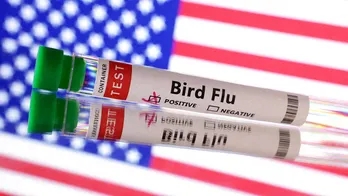Haunted Houses Have a Surprising Effect on The Immune System
Visiting a haunted house could have a chilling effect on the immune system. According to new research, a jumpscare might be a jump start for the human body's defenses, similar to a cold plunge.
In the study, 22 participants with low levels of inflammatory markers in their blood visited a haunted house for roughly 50 minutes. During that time, they were confronted by killer clowns, decomposing zombies, and chainsaw-wielding attackers with bloody butcher aprons and pig masks.
Three days later, researchers from Aarhus University in Denmark found inflammation levels in more than 80 percent of the group had dropped, and in nearly half the participants, levels had normalized entirely.
When 91 other volunteers entered the haunted house without baseline inflammation, researchers again noticed immune changes.

Haunted houses are similar to any safe yet scary activity, in that they result in a boost of adrenaline and a surge of endorphins, kind of like a runner's high.
But while rollercoasters or scary movies produce a powerful psychological response that some people find pleasurable and liberating, the benefits of recreational fear to our bodies are not as well understood.
The recent haunted house study in Denmark is an attempt to fill that gap. The research did not include a control group, and its comparison groups were unevenly divided. That said, the results suggest that feeling scared for fun could have significant health benefits.
Along with prior research, this "may be revealing a potential structural connection in the relationship between mental states and inflammation," write the authors, led by clinical researcher Marie Louise Bønnelykke-Behrndtz.
"While anxiety appears linked to low-grade, chronic inflammation, fear may be associated with the peak and subsequent resolution of inflammation."
In the normal inflammation group, researchers found several immune cells in the blood had decreased after the haunted house experience. These immune cells included lymphocytes, which help kill tumor cells; monocytes, which find and destroy germs; and two types of white blood cells, called eosinophils and basophils.
In the inflammation group, on the other hand, scientists found that only lymphocytes and monocytes had decreased.

The results suggest that when fear is elicited for fun, it can affect the immune system by re-balancing levels of immune cells and markers of inflammation in the blood.
More research is needed to understand how that impact occurs, but studies on mice suggest that fear and acute stress can stimulate the adrenal glands, triggering adrenergic receptors on immune cells.
The adrenergic system prompts the fight or flight response, and in mice, this system appears to mobilize the animal's immune system and prepare it for potential trauma or infection.
In humans, the adrenergic system can be activated through cold exposure, and studies have linked these frigid experiences with anti-inflammatory markers. But whether or not 'recreational fear' can tap into the adrenergic system in similar ways is unknown.
During the 50-minute haunted house experience, participants reported an average scare level of 5.4, on a scale of 1 to 9. Their heart rates averaged around 112 beats per minute throughout the experience.
This indicates a moderate to high level of fear, which was sustained for nearly an hour.
Like taking a cold winter plunge in the ocean, this experience shows signs of reducing inflammation.
"Future research should explore the adrenergic system's role and confirm the persistence of these effects," the team from Aarhus concludes.
The study was published in Brain, Behavior, and Immunity.



